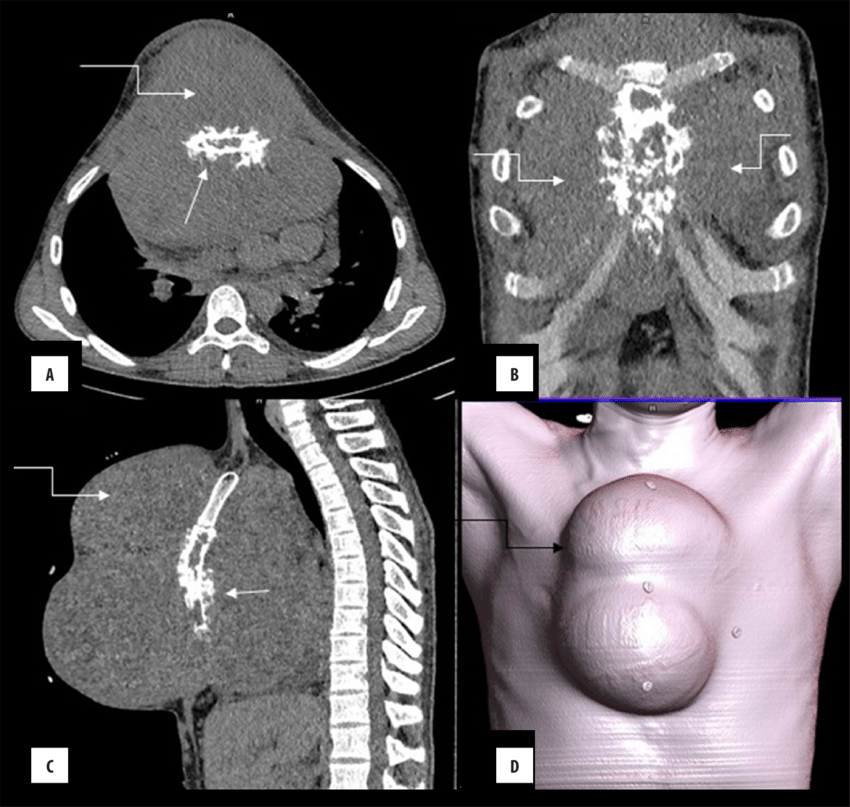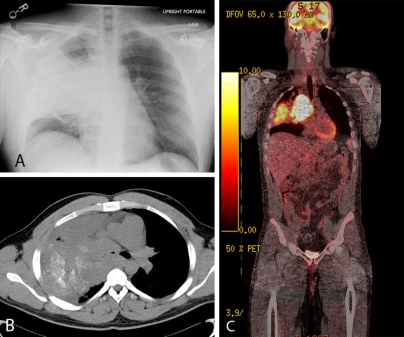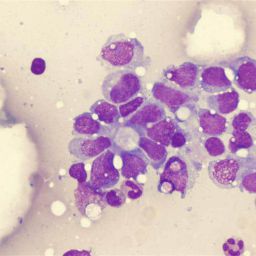
- Overview of sarcomas: Sarcomas are a group of cancers that originate in the connective tissues such as muscles, bones, fat, and nerves. Understanding how these cancers spread is crucial for diagnosis, treatment, and prognosis.
- Metastasis: The spread of cancer cells from their primary location to other parts of the body is known as metastasis. This process is complex and varies in its impact depending on the cancer type and the patient’s condition.
- Relevance of metastasis in sarcomas: Metastasis in sarcomas can lead to the deterioration of multiple organs, complicating the clinical management of the disease.
Understanding Sarcomas
Types of Sarcoma
- Soft Tissue Sarcoma (STS): Develops in muscles, fat, nerves, and blood vessels.
- Bone Sarcoma: Affects the bones, including osteosarcoma, the most common bone cancer in children and young adults.
- Subtypes: Including liposarcoma, rhabdomyosarcoma, leiomyosarcoma, and synovial sarcoma.
Risk Factors for Sarcoma
- Genetic mutations and hereditary conditions (e.g., Li-Fraumeni syndrome, neurofibromatosis).
- Environmental factors such as exposure to radiation.
- Viral infections (e.g., HPV, HTLV-1).
- Age and gender-specific predispositions.
Initial Tumor Growth and Local Spread
- Sarcomas generally begin as localized tumors, growing within the tissues from which they originate. This localized growth can lead to compression of adjacent structures, causing symptoms like pain or swelling.
How Sarcomas Begin to Spread
The Biology of Metastasis in Sarcomas

- Angiogenesis: Formation of new blood vessels that supply the tumor, allowing it to grow and spread.
- Invasion of Blood and Lymphatic Vessels: Sarcoma cells enter local blood vessels or lymphatic channels, which transport the cancer cells to distant parts of the body. This is the first step in metastatic spread.
Early Metastasis: The Role of Circulating Tumor Cells (CTCs)
- Circulating tumor cells (CTCs) are cancer cells that have detached from the primary tumor and entered the bloodstream or lymphatic system.
- These cells may survive in the circulation, evade immune system detection, and travel to distant organs.
Stages of the Metastasis Process in Sarcomas
Stage 1: Local Invasion
- Invasion of Surrounding Tissues: Sarcoma cells infiltrate nearby tissue structures, such as muscles, blood vessels, and nerves. This direct invasion leads to pain and organ dysfunction, depending on the tumor’s location.
Stage 2: Intravasation
- The cancer cells invade local blood vessels or lymphatic vessels. At this stage, they enter the bloodstream or lymphatic system, becoming circulating tumor cells (CTCs). This marks the transition from a localized tumor to a metastatic one.
Stage 3: Circulation and Extravasation
- Survival in Circulation: CTCs must survive in the hostile environment of the bloodstream, where they are exposed to shear stress, immune cells, and other barriers.
- Extravasation: Upon reaching distant organs, CTCs exit the bloodstream through the blood vessel walls (extravasation), infiltrating the new organ and establishing secondary tumors.
Stage 4: Colonization and Secondary Tumor Growth
- Colonization: The cancer cells begin to grow and establish a secondary tumor (metastasis) in the new site. They may proliferate and form a new mass of cells similar to the primary tumor.
- Microenvironment: Each organ where sarcoma metastasizes offers a different microenvironment, which influences the cancer’s ability to thrive. Certain sarcomas have preferences for metastasis in specific organs, such as the lungs, liver, or bones.
Factors Influencing the Metastatic Process

Tumor Characteristics
- Tumor size and grade: Larger tumors and higher-grade tumors are more likely to metastasize.
- Molecular profile: Genetic mutations, such as TP53 or RB1 mutations, may enhance a sarcoma’s metastatic potential by altering its ability to invade and survive in distant tissues.
Host and Microenvironmental Factors
- Vascularization: Well-vascularized tumors can more easily invade blood vessels and spread to distant sites.
- Immune system function: A suppressed immune system may fail to recognize and destroy metastasizing tumor cells.
- Organ-specific microenvironments: Tumors may metastasize to organs with particular tissue types or factors that promote tumor growth.
Genetic and Epigenetic Changes in Sarcoma Cells
- Mutations in genes involved in cell growth, apoptosis, and angiogenesis can aid in the metastatic process.
- Epithelial-mesenchymal transition (EMT): A process in which cancer cells lose their epithelial characteristics and gain migratory properties, facilitating metastasis.
Metastasis in Different Subtypes of Sarcoma
Soft Tissue Sarcomas
- These sarcomas most commonly metastasize to the lungs, but they can also spread to bones and liver.
- Specific types of STS, such as liposarcoma, may have a preference for specific organs based on their molecular characteristics.
Osteosarcoma
- Lung metastasis: Osteosarcoma commonly metastasizes to the lungs, even in early stages of disease.
- Lung metastasis presents a significant challenge, as these secondary tumors are often resistant to chemotherapy.
Rhabdomyosarcoma
- This pediatric soft tissue sarcoma can metastasize to the lungs, bone marrow, and lymph nodes.
- Rhabdomyosarcoma metastasis often occurs at early stages, requiring aggressive treatment strategies.
Leiomyosarcoma
- Primarily affects smooth muscle and can metastasize to the lungs, liver, or other soft tissues.
- The metastatic potential is influenced by the tumor’s molecular markers and the patient’s immune response.
Diagnostic Approaches for Detecting Metastasis

Imaging Techniques
- CT scans and MRIs: Used to identify the primary tumor and check for signs of metastasis, particularly in soft tissue and bone sarcomas.
- PET scans: Help identify active areas of metastasis and are increasingly used to monitor treatment response.
- X-rays: Useful in detecting bone involvement and metastases to skeletal structures.
Biopsy
- Tissue biopsy remains the gold standard in confirming metastatic spread, allowing pathologists to evaluate the nature of the metastasis.
Blood Tests
- Circulating tumor markers: Certain sarcomas produce detectable markers in the blood that can help in tracking the spread of the disease.
- Cell-free DNA (cfDNA): Analysis of cfDNA can reveal genetic mutations associated with metastasis and provide a non-invasive method to monitor treatment efficacy.
Treatment of Metastatic Sarcomas
Surgical Intervention
- If metastasis is localized to one or two sites, surgery may be an option to remove the secondary tumors and prolong survival.
- The decision to perform surgery depends on factors like the tumor’s size, location, and whether it is operable without causing major complications.
Chemotherapy and Radiation Therapy
- Chemotherapy: Commonly used for systemic treatment of metastatic sarcomas, often in combination with surgery or radiation.
- Radiotherapy: Targeted radiation may be used for specific metastases, especially in patients with inoperable tumors.
Targeted Therapy
- Focuses on molecular and genetic markers specific to the sarcoma, blocking pathways that promote metastasis.
- Angiogenesis inhibitors: Target blood vessels that supply the tumor, restricting its ability to grow and spread.
Immunotherapy
- Newer approaches, including immune checkpoint inhibitors, aim to boost the body’s immune response against metastatic cancer cells.
- Ongoing research into personalized immunotherapy for metastatic sarcomas is promising.
Challenges in Managing Metastatic Sarcomas

Resistance to Treatment
- Metastatic sarcomas can develop resistance to traditional chemotherapy and radiation therapy, making treatment difficult.
Recurrence
- Even after successful treatment of primary tumors, sarcomas may relapse in distant organs, particularly the lungs.
Limited Treatment Options
- While advances in targeted therapies have improved outcomes, metastatic sarcomas remain difficult to treat compared to other cancers due to their heterogeneous nature.

